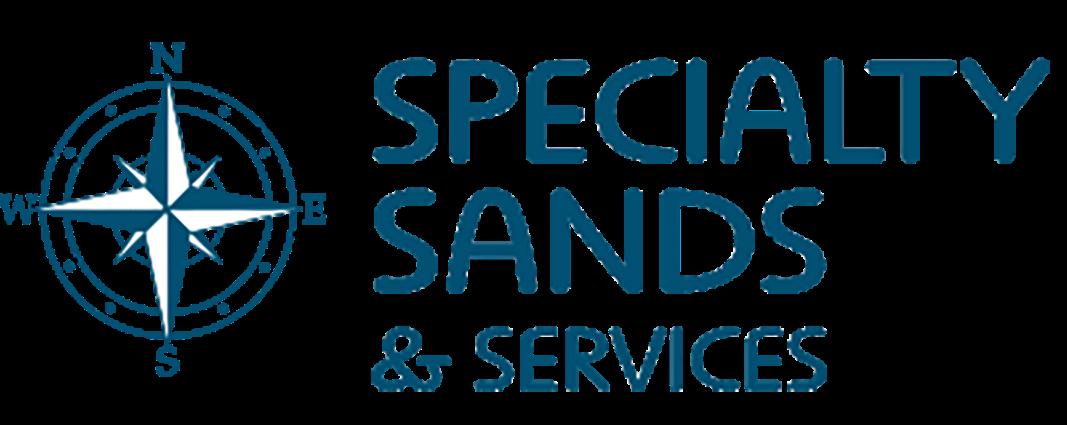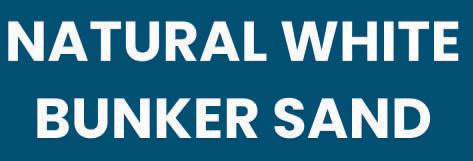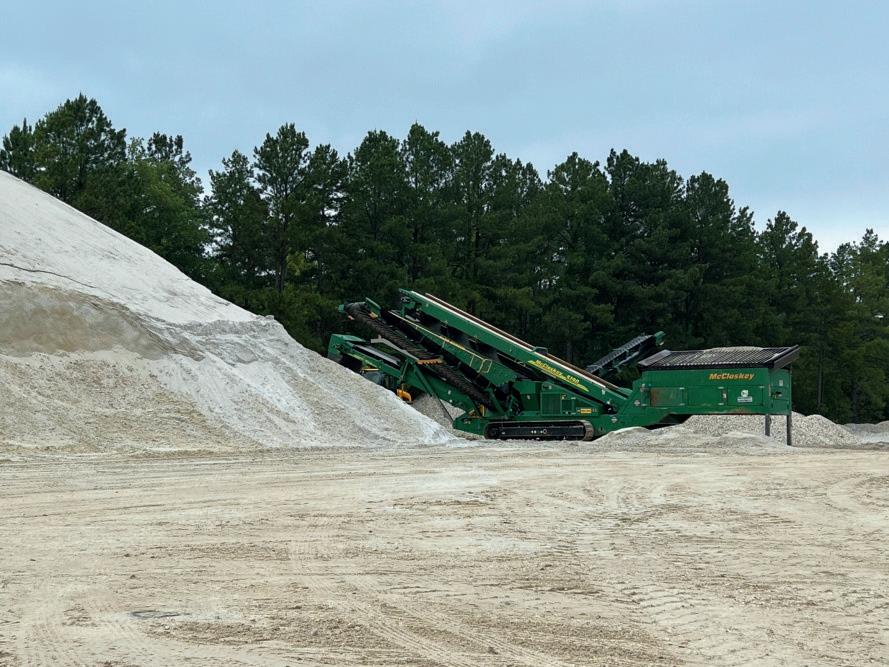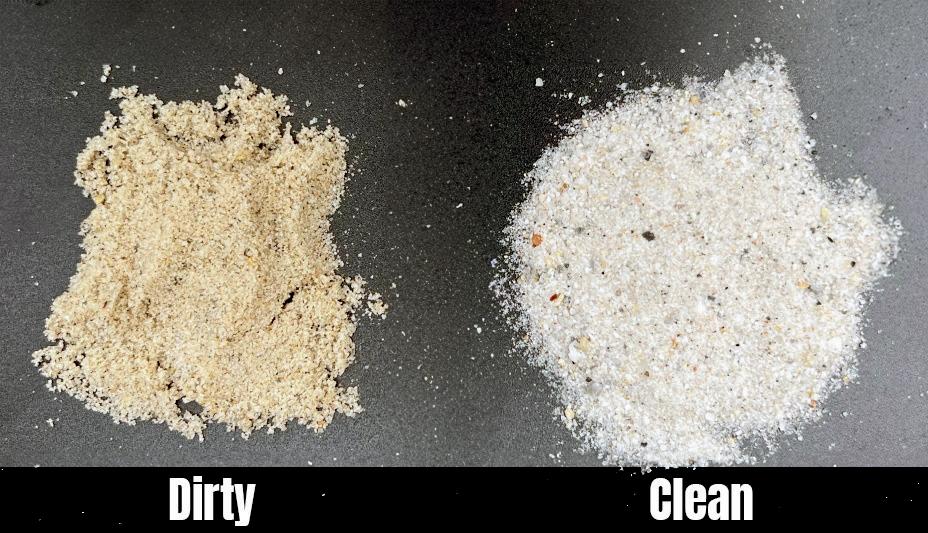
THE ARKANSAS TURFGRASS ASSOCIATION MAGAZINE • FALL 2024
What is the Endangered Species Act and What does it Mean for Turfgrass Managers?
PLUS > Save the Date for the 2025 Arkansas Turfgrass Conference & Trade Show




THE ARKANSAS TURFGRASS ASSOCIATION MAGAZINE • FALL 2024
What is the Endangered Species Act and What does it Mean for Turfgrass Managers?
PLUS > Save the Date for the 2025 Arkansas Turfgrass Conference & Trade Show


In just seven years, TifTuf®’s installation of over 2 billion square feet has saved more than 48 billion gallons of water. It’s the only Bermudagrass to top National Turfgrass Evaluation Program trials 93% of the time, far ahead of Tahoma at 73%. Recognized for its drought tolerance, TifTuf® is the USDA Specialty Crop Research Initiative’s standard for future university testing and has earned the #1 ranking in the USDA/NTEP ET-Based Water Deficit Research Trial.
TifTuf ®’s water efficiency has garnered numerous awards, including the Smart Approved Water Mark from Australia’s Water Services Association, the Georgia House and Senate’s Extraordinary Water Conservation award, and the

Georgia Association of Water Professionals’ Water Wise Award. It’s also named the Turfgrass of Choice by Southern Living Inspired Communities.
TifTuf® is the most produced proprietary Bermudagrass globally, with more produced in the U.S. than all other varieties combined worldwide. It is the preferred choice for new golf courses, sports fields, and residential and commercial landscapes, and it’s the only Bermuda

sold through Home Depot and Lowe’s by Harmony Outdoor Brands.
While others check boxes, TifTuf® redefines them. Experience the exceptional quality and innovation of TifTuf® turfgrass.

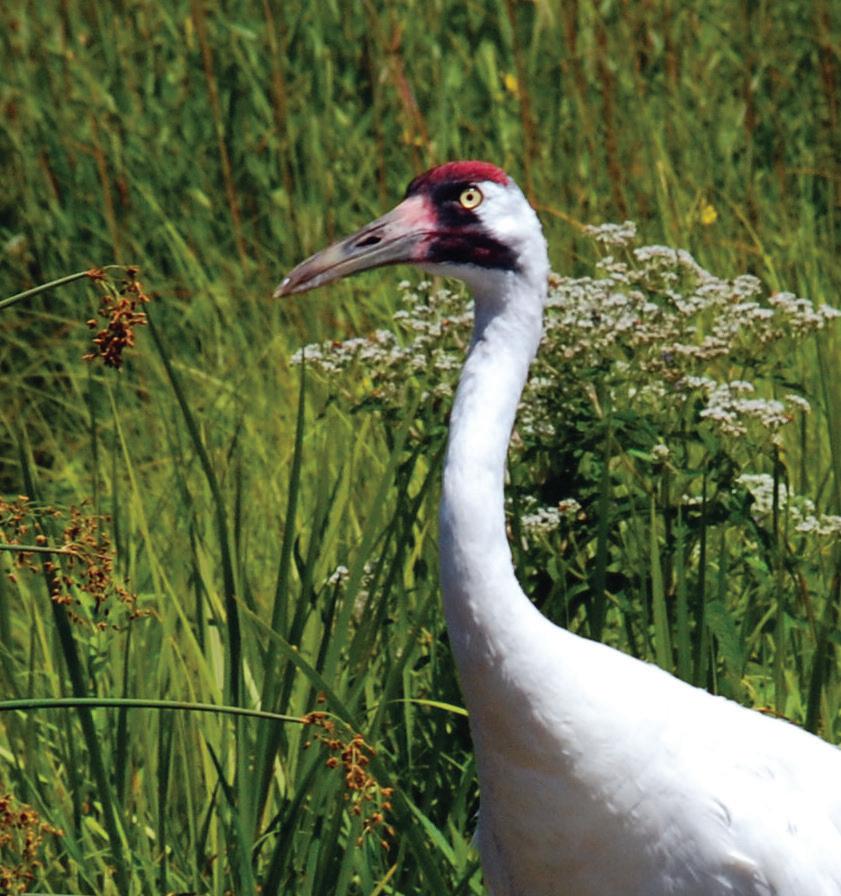

Arkansas Turfgrass Association
P.O. Box 1862 • Lowell, AR 72745
Tel: 479-301-5534
Published by:
Leading Edge Communications, LLC
206 Bridge Street, Suite 200 Franklin, TN 37064
Tel: 615-790-3718
Email: info@leadingedge communications.com
ATA OFFICERS
Richard Covert, President Baptist Health Systems Richard.covert@baptist-health.org
Kyle Sanders, Immediate Past President Sanders Ground Essentials 501-315-9395 kylesanders@sandersground.com
Courtney Landreth Executive Director ataturfgrass@gmail.com
Wendell Hutchens, Ph.D., Educational Chair wendellh@uark.edu
Seth Dunlap Arkansas State Plant Board seth.dunlap@agriculture.arkansas.gov 501-225-1598
Daniel Baxley Parks & Recreation Director of Mountain Home dbaxley@cityofmountainhome.com
Brandon Bradley Picture Perfect Lawns brandon@pictureperfectlawns.com
Rodney Fisher
Agra Turf, Inc. • 501-268-7036 agrarod@yahoo.com
Josh Landreth, Vice President Ace of Blades • 479-530-7001 aceofblades@cox.net
Guy Oyler
Jerry Pate Turf & Irrigation goyler@jerrypate.com • 501-317-5980
Jay Randolph
Sebastian County Park Admin. & Golf Course Superintendent jrandolph@co.sebastian.ar.us
Ricky Self
Cypress Creek r.self@yahoo.com • 501-605-8000
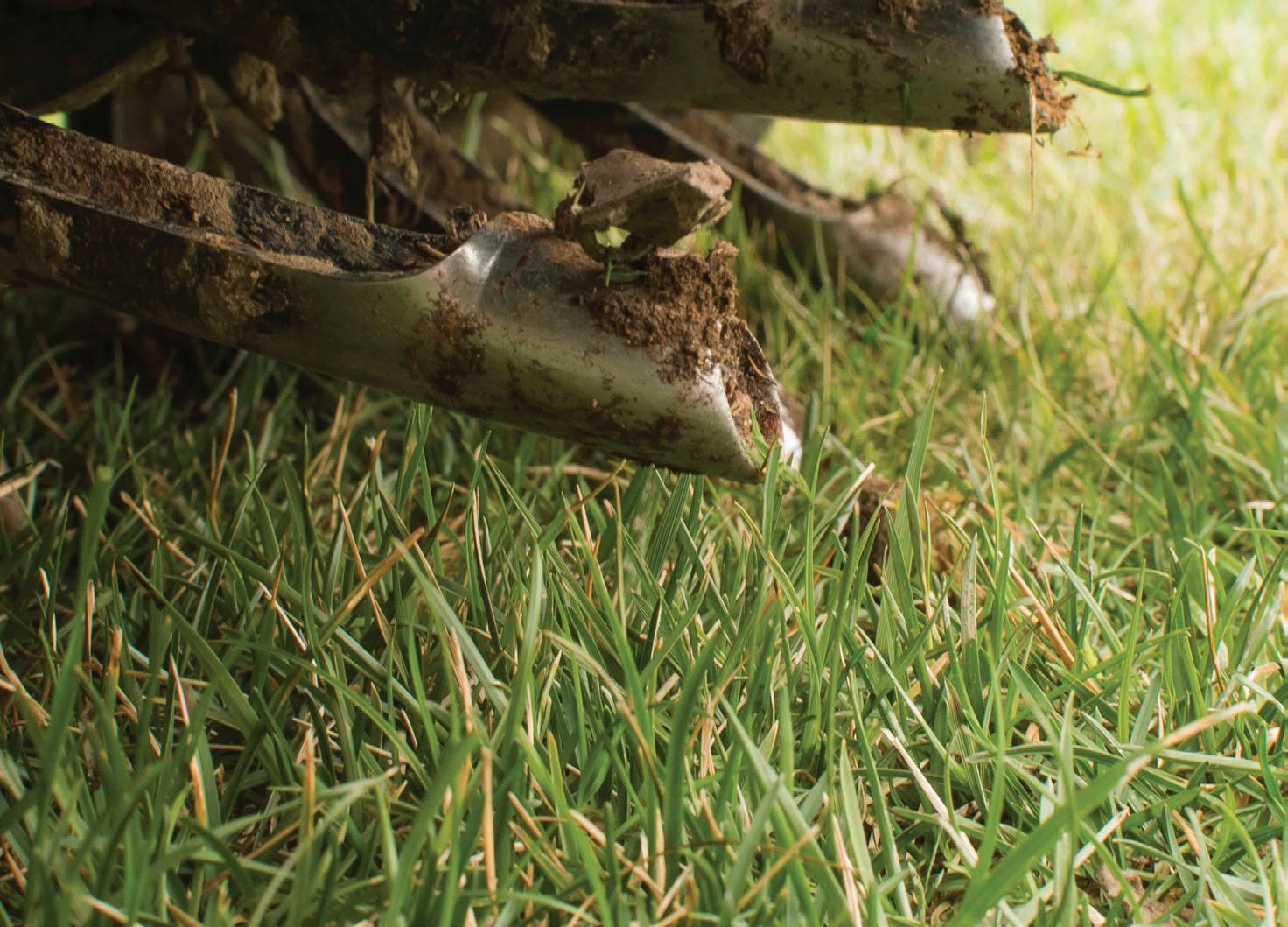
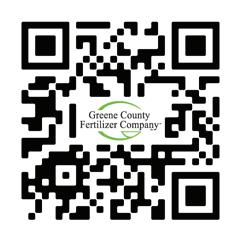



agrarod@yahoo.com




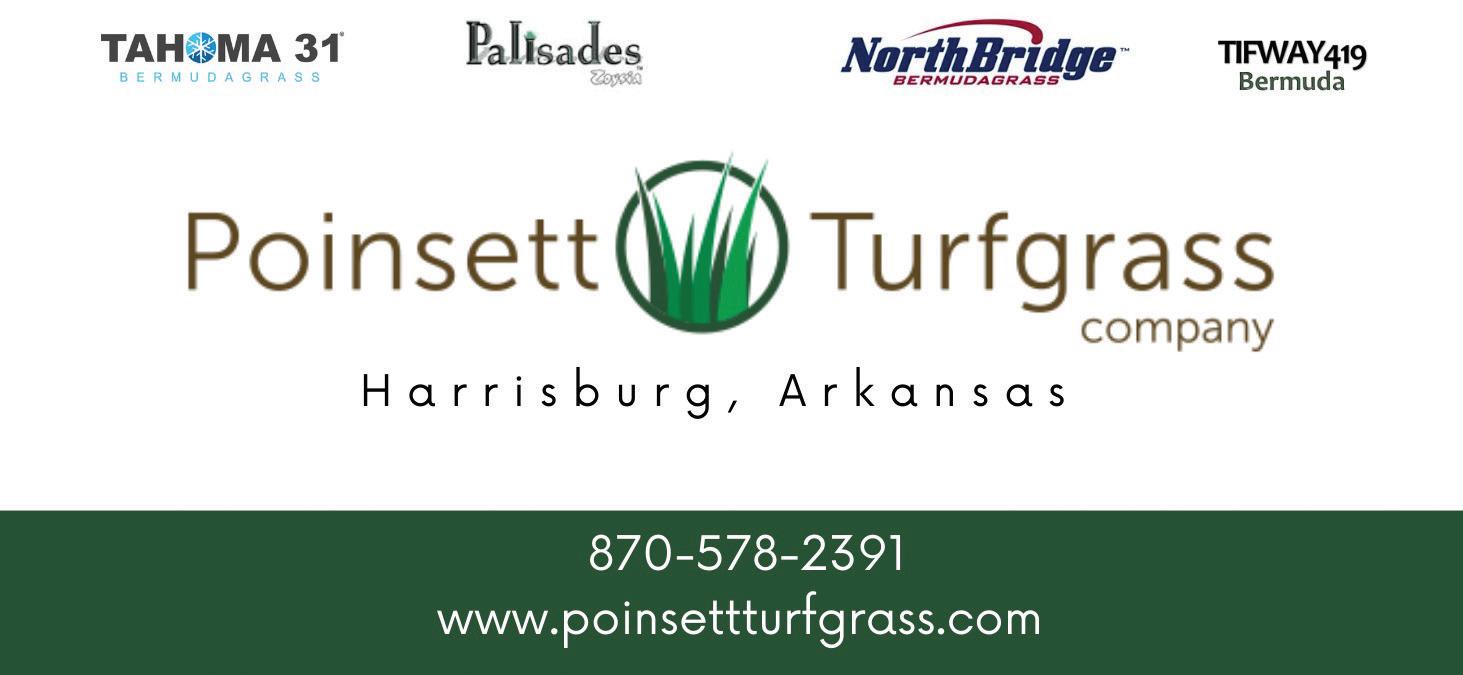
Ilove fall! I’m not like those weird people that can’t wait to have pumpkin tasting coffee and stuff like that. But…I do enjoy the cool mornings, the foliage, and other old people stuff. Our family loves the outdoors, and fall provides such an awesome opportunity to experience the great state we live in. We love fishing, hiking, outdoor sports, and a good campfire. It’s hard to beat S’mores in October! Although it may be tough to grow grass in Arkansas, that seasonality sure does create a lot of beauty. Make sure you take time this fall to enjoy whatever it is you enjoy. You deserve it. You need it. Take advantage of the resources our beautiful state has to offer.
We hope that you are marking your calendars for the 2025 Arkansas Turfgrass Association annual conference on January 16th and 17th in Hot Springs. The ATA exists to “Bring opportunity and resources to the turfgrass industry of Arkansas.” We hope to provide much more than just recertification credits. We hope to provide opportunities to engage with your fellow professionals, to get support in areas we all need it, to network, to provide educational opportunities that are exciting and new, to help our industry grow as professionals. Our best avenue of providing those opportunities is the annual conference. We need your support to grow this conference so that we can provide opportunities every year.
The Baggo tournament was a huge hit in 2024, and we plan to expand on some of the social dynamic to the

conference. Dr. Wendell Hutchens is now helping the ATA with our educational program. He already has commitments from several awesome speakers. We are very excited about bringing a program to our members that is not just educational, but also relatable. Dr. Hutchens is amazing, and we are so thankful for his work on all this.
A couple of things we wanted to make sure you are aware of in regards to the coming conference. The Embassy is currently under construction, and we were not able to reserve a room block. They may have rooms available by then, but we don’t know. If you want to stay there, I’d recommend booking sooner than later. We do have a block of rooms at Hotel Hot Springs, and I’m sure Courtney will make the information available on that.
We’re also excited to be able to award 2 scholarships at next year’s conference. What an awesome opportunity. Thank you to our sponsors, vendors, and all of our members. Your support has helped make that possible. It’s great to be involved with an organization that truly cares about the future of their industry. Let’s keep it up!
We can’t wait to see each of you in Hot Springs in January.
Sincerely,
Josh Landreth ATA Vice President
Mike Richardson, Ph.D. Professor 479-575-2860 mricha@uark.edu
Wendell Hutchens, Ph.D. Assistant Professor of Turfgrass Science University of Arkansas, Department of Horticulture Cell: 276-952-8186 Office: 479-575-6205 wendellh@uark.edu X / Twitter: @HutchensWendell Hannah




JANUARY 16 – 17, 2025
Hot Springs Convention Center in Hot Springs, Arkansas
Don’t miss out! The ATA Annual Conference and Trade Show offer great opportunities for networking, education and certifications. Stay tuned for more details and registration information!
Due to major renovations at the Embassy Hot Springs, there will not be a room block available due to the limited number of rooms open.
Register for the conference and reserve a room at Hotel Hot Springs on the ATA website: arkansasturf.net
Companies that would like to be a part of the Trade Show, contact: Courtney Landreth • ataturfgrass@gmail.com • (479) 301-5534
Thursday – January 16, 2025
7:30 AM 8:30 AM Trade Show / Breakfast
8:30 AM 9:00 AM Welcome to 2025 ATA
9:00 AM 9:30 AM Session 1
9:30 AM 10:00 AM Session 2
10:00 AM 11:00 AM Break / Visit Trade Show 11:00 AM 11:30 AM Session 3
and Session 4
12:30 PM 2:00 PM "Lunch & Learn + Visit Trade Show "
2:00
2:30
Friday – January 17, 2025 – Golf Session
9:00 AM 9:45 AM Golf Session 1
Calibration Techniques for Properly Calibrating Turf Sprayers
Pest Management Developing a Turfgrass IPM Plan
Schiavon Responsible irrigation on golf courses 10:00 AM 10:45 AM Golf Session 2
Patton Weed control on golf courses 11:00 AM 11:45 AM Golf Session 3
O'Brien Updates from the USGA and new wetting agent research
Friday – January 17, 2025 – Lawn & Landscape Session
9:00 AM 9:45 AM Lawn & Landscape Session 1
10:00 AM 10:45 AM Lawn & Landscape Session 2
11:00 AM 11:45 AM Lawn & Landscape Session 3
Patton
an herbicide program for home lawns
Bowden Pest management in ornamentals
Schiavon Proper lawn fertility practices and interpreting a soil test
Friday – January 17, 2025 – Parks & Sports Turf Session
9:00 AM 9:45 AM Sports Turf Session 1 Marta Pudzianowska Bermudagrass cultivars for sports field usage
10:00 AM 10:45 AM Sports Turf Session 2
11:00 AM 11:45 AM Sports Turf Session 3 Mike Richardson / Will Green Alternative overseeding options in bermudagrass sports fields
When it comes to turfgrass, TifTuf Bermudagrass is the first and only cultivar to pass the rigorous standards and receive the Smart Approved WaterMark designation. New to the U.S., the Smart Approved WaterMark has provided a trusted system of identifying water conservation products in Australia for 20 years.

The Smart Approved WaterMark is described as an “independent assessment certification process providing assurance for consumers, businesses and the water industry that the branded, certified products and services are water efficient, sustainable and fit for purpose.” Recognized for their effective promotion of water conservation products and programs since 2004, this distinction was recently expanded beyond Australia thanks to The Water Conservancy and the Alliance for Water Efficiency.
The Water Conservancy has been the key advisory hub for the adoption of improved water stewardship products in Australia. Likewise, the Alliance for Water Efficiency is dedicated to water conservation efforts across North America. Many of the products licensed in Australia have parent companies in the U.S., so this expansion is a great fit.

TifTuf has been posted on the Smart Approved WaterMark product website for years. It is described as “incredibly drought tolerant and water efficient, proven by extensive independent turf trials. TifTuf is a grass that has been bred to stand up to drought conditions and save you water.” In fact, TifTuf Bermudagrass drought resistance and increased water efficiencies makes it genetically superior to other bermudagrass cultivars. This University of Georgia bred turfgrass has over 25 years of research data, backing up its conservation qualities and 38% reduction of water use compared to the most commonly used bermudagrass.
The U.S. has the EPA WaterSense program to evaluate select water efficiency products, but it does not evaluate or promote drought tolerant plant materials. By having the Smart Approved WaterMark initiative, consumers and local leaders can choose water conservation efforts in North America that further encourage increased efficiencies.

In addition, because TifTuf is a proven drought tolerant turfgrass, it is referenced as such in the Water-Wise Landscape Guide for the Georgia Piedmont for reduced water use in landscape planning. Promoted by the Metro North Georgia Water Planning District and the University of Georgia Extension Service, this document educates consumers on water conservation when planning a landscape project, further cementing the importance of U.S. designation.
The Smart Approved WaterMark is a respected label that helps consumers choose water efficiency. Work by a seven-member Technical Expert Panel is utilized to evaluate applications from product manufacturers and service providers. The panel meets three times a year to independently assess those wanting to receive accreditation. There are currently 87 approved certifications across various categories, including turfgrass, irrigation, garden, pool and spa, car washing, plumbing, greywater, and bathrooms.
TifTuf turfgrass and 36 other outdoor water use efficiency tools and technologies, such as sprinkler systems, irrigation controllers, timers and more have earned the label. Product manufacturers that have received the Smart Approved WaterMark endorsement are allowed to use the logo and are recognized on the website.
Saving water is good stewardship. Product advancement helped lead the way, but improved plant breeding by the University of Georgia, and perhaps others, is the new horizon. TifTuf is pleased to have this Smart Approved WaterMark as a validator of water efficiency and delivering on data driven conservation innovation.
The complete list of approved products in this program is available at www.smartwatermark.org

By Estefania G. Polli and Travis Gannon
Estefania G. Polli is a Ph.D. candidate under the direction of Travis Gannon in the Department of Crop and Soil Sciences at North Carolina State University.
Travis Gannon is a Professor in the Department of Crop and Soil Sciences at North Carolina State University.
TheEnvironmental Protection Agency (EPA) has encountered difficulties complying with the ESA (Endangered Species Act), resulting in the completion of less than 5% of its obligations under the Act. As a consequence, EPA faces over 20 lawsuits and impeding deadlines for over 50 pesticides by 2030. Moreover, failure to fulfill its obligations has led to the suspension of pesticide registrations for three dicamba products in agronomic crop systems on February 6, 2024. These regulatory challenges and legal risks have created confusion and uncertainty for the pesticide industry and end-users.
The Endangered Species Act of 1973 was designed to protect endangered and threatened species, along with their habitats. Administered by the U.S. Fish and Wildlife Service (FWS) and the National Marine Fisheries Service (NMFS), the ESA seeks to prevent species extinction and promote habitat conservation. Federal agencies, including the EPA, must consult FWS and NMFS to ensure their actions do not harm endangered or threatened species or their habitats.
EPA’s responsibilities under the ESA include regulating pesticides establishing the Endangered Species Protection Program in 1988. However, the process of evaluating the impact of pesticides on species and their habitats has been slow, expensive, and difficult. In response, collaborative efforts between the EPA, FWS, NMFS and U.S. Department of Agriculture have been made to develop more efficient ecological risk assessment methods. Moreover, in 2021, the EPA initiated the development of workplans to continue improving its compliance with the ESA.
The latest workplan highlights measures taken and planned to improve protection on non-target species. These measures include pilot species identification, impact of new pesticides on listed species, development of region-specific strategies using the Bulletins Live! Two (BLT) website, exploration of mitigation strategies for nonagricultural uses, and implementation of early ecological mitigation for groups of pesticides through the Federal Insecticide, Fungicide, Rodenticide Act (FIFRA) Interim Ecological Mitigation developed by the EPA. This Interim step proposes additional mitigation and conservation measures, aiming to reduce negative effects or potential risks of pesticide use, particularly caused by water runoff, soil erosion, and spray drift.
Currently, its scope encompasses only agronomic crops, though there is an anticipation of integrating turfgrass systems into it in the near future. While EPA has drafted some general guidelines for major agronomic crop production systems, there is limited information available specific to managed turfgrass sites and other specialty crop systems. EPA has stated they plan to explore strategies for pesticide use in non-agricultural areas, specifically mentioning collaboration with FWS and the American Mosquito Control Association to develop mitigation measures for certain insecticides. However, they did not specify what those mitigations might be. Similarly, EPA is exploring broad mitigation measures to minimize exposure when pesticides are used in residential settings (and presumably other settings), though no specific mitigations were mentioned. Additionally, EPA plans to collaborate with various pesticide user groups to better devise these mitigation strategies indicating there may be an opportunity for you (as a professional pesticide applicator) to provide feedback.
The proposed changes are outlined below:
Additional measures would primarily apply to pesticides with an organic carbon partitioning coefficient (Koc) of 1,000 L kg-1 or less, indicating moderate to high mobility in soil. Moreover, these measures include two surface proposed water protection statements that applicators would follow when precipitation occurs or is forecasted: “do not apply during rain” and “do not apply when a storm event likely to produce runoff from the treated area is forecasted to occur within 48 hours following application.” Meanwhile, growers would be responsible for selecting mitigation measures from a predefined pick list. The EPA may propose one or more measures from the pick list based on specific ecological risks, benefits, and pesticide use. Examples of reduction measures on the pick list include vegetative filter strips, cover crops, field borders, and riparian buffer strips or zones, none or reduced tillage, contour buffer strips, and vegetative barriers.
U.S. Federal Government
Legislative Branch
Executive Branch
Judicial Branch
President of the U.S.
The Cabinet
Department of Agriculture (USDA)
Department of Commerce (DOC)
National Oceanic and Atmospheric Administration (NOAA)
Department of Interior (DOI)
Independent and Semi-Independent Government Agencies
Private, Non-Profit Organization
National Marine Fisheries Service (NMFS)
U.S. Fish and Wildlife Service (FWS)
Environmental Protection Agency (EPA)
National Academic of Sciences (NAS)
Figure 1. United States Government Organizational Structure: Illustration highlighting key agencies involved in implementing the Endangered Species Act, including the U.S. Fish and Wildlife Service, the National Marine Fisheries Service, and the Environmental Protection Agency
Application restrictions regarding droplet size, windspeed, and release height limits, as well as the aerial application prohibitions, will remain on the label. In addition to these restrictions, the EPA intends to propose spray drift buffers from aquatic habitats (e.g., lakes, reservoirs, rivers, permanent streams, wetlands or natural ponds, estuaries, and commercial fish farm ponds) and conservation areas (e.g., public lands and parks, Wilderness Areas, National Wildlife Refuges, reserves, conservation easements).
How does ESA affect the pesticide industry and applicators, sod growers, and turf managers?
The FIFRA Interim Ecological Mitigation serves as the initial framework to registrants to address pesticide risks to nontarget species during both registration and registration review processes. For each FIFRA action, the EPA will consider a menu and propose, based on the risks and benefits of the particular pesticide, which specific measures to include on the pesticide label. Moreover, the EPA has proposed incorporating language for pesticide products, pesticide incident reporting, insect pollinators protection, and geographical restrictions by directing users to reference BLT website.
Pesticide labels are evolving to include more detailed directions and restrictions. Applicators are responsible for carefully
reading and following these instructions. Additionally, as per label instructions, they will likely be required to consult the BLT online database and comply with any mitigation specified in a Bulletin for the application area. It is important to note that Bulletins do not replace or override any additional restrictions that a state may impose. Thus, applicators need to be aware of pesticide regulations at both state and federal levels. As previously stated, implications for turfgrass managers remain ambiguous at this time; however, an example of specific geographical use limitations in North Carolina currently for four dicamba formulations approved for use on dicamba-tolerant cotton and soybean crops is included in Figure 2.
The implementation of additional mitigation and conservation measures may increase labor and expense for turfgrass managers. Some of these measures may require significant changes to existing systems, which could involve investments in infrastructure, equipment and workforce. However, there are potential long-term benefits, including improved soil health, enhanced biodiversity, and reduced environmental impact. Further, land managers may qualify for financial assistance or incentive programs from public and private organizations to help offset implementation costs and encourage the adoption of these measures.
Overall, the ESA will impact land managers by requiring them to be knowledgeable about the endangered species present in areas where they apply pesticides and to implement appropriate conservation efforts to ensure those species aren’t adversely affected. As previously stated, what compliance looks like in specialty cropping systems, including managed turfgrass areas is unclear at this time. •


1. What is Matrix?
• Reinforced product grown at bottom of sand based profile
• Sprigged field to insure highest percolation rates
• Ready to Play product
2. Where is it used?
• High demand athletic fields: football, soccer, baseball, softball, and rugby.
• High traffic areas: Horsetracks, goalmouths, and tournament crosswalks.

Winstead Turf Matrix is a 100% USGA sand based , ready to play sports turf replacement system that enables instant use straight after install, perfectly suited for high demand stadium / elite field applications Winstead Turf Farms, Inc. 22860 Highway 196
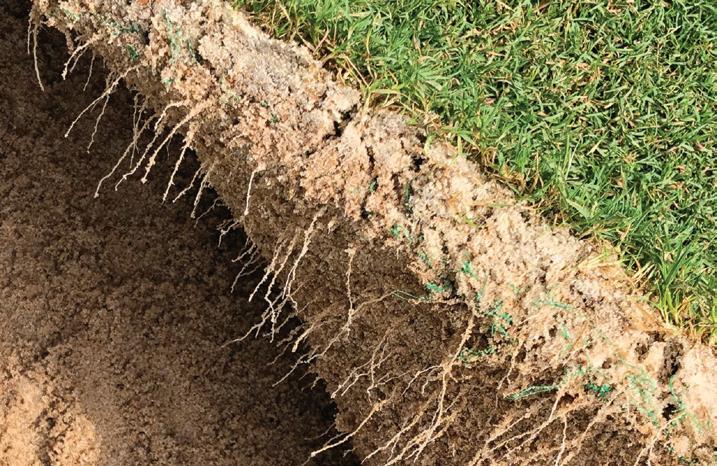
References
[US EPA] U.S. Environmental Protection Agency (2022) ESA WORKPLAN UPDATE: Nontarget Species for Registration and Other FIFRA Actions. https://www.epa.gov/system/files/documents/ 2022-11/esa-workplan-update.pdf. Accessed: May 14, 2024.
[US EPA] U.S. Environmental Protection Agency (2023) Conventional Pesticide Registration. https://www.epa.gov/pesticide-registration/ conventional-pesticide-registration.
Accessed: January 30, 2024.
[US EPA] U.S. Environmental Protection Agency (2023) Endangered Species: Information For Pesticide Users. https://www.epa.gov/endangered-species/ endangered-species-information-pesticide-users. Accessed: January 31, 2024.

[US EPA] U.S. Environmental Protection Agency (2023) EPA Advances Early Pesticides Protections for Endangered Species, Increases Regulatory Certainty for Agriculture. https://www.epa.gov/pesticides/epa-advances-early-pesticidesprotections-endangered-species-increases-regulatory. Accessed: February 5, 2024.
[US EPA] U.S. Environmental Protection Agency (2023) Tips for Reducing Pesticide Impacts to Threatened and Endangered Species. https://www.epa.gov/endangered-species/tips-reducing-pesticideimpacts-threatened-and-endangered-species. Accessed: February 5, 2024.
[US EPA] U.S. Environmental Protection Agency (2024) Protecting Endangered Species from Pesticide. https://www.epa.gov/endangered-species. Accessed: January 30, 2024.
[US EPA] U.S. Environmental Protection Agency (2024) Bulletins Live! Two — View the Bulletins. https://www.epa.gov/endangered-species/ bulletins-live-two-view-bulletins.
Accessed: May 25, 2024.
The rule targets vulnerability and abuses experienced by workers under the H-2A program that undermine fair labor standards for all farmworkers in the U.S.

TheDepartment of Labor announced a final rule to strengthen protections for farmworkers. The rule targets vulnerability and abuses experienced by workers under the H-2A program that undermine fair labor standards for all farmworkers in the U.S.
The H-2A program allows employers to hire temporary foreign workers when the department determines there is a lack of able, willing and qualified U.S. workers to perform the agricultural labor or services, and that employing temporary labor will not adversely affect the wages and working conditions of similarly employed U.S. workers.
“H-2A workers too frequently face abusive working conditions that undercut all farmworkers in the U.S.,” said Acting Secretary Julie Su. “This rule ensures farmworkers employed through the H-2A program are treated fairly, have a voice in their workplace and are able to perform their work safely. It also promotes employer accountability, benefitting all farmworkers by upholding labor standards. The Biden-Harris administration is committed to being the most pro-worker administration in history, and this rule is a significant milestone in that effort.”
The final rule includes the following
• Adding new protections for worker selfadvocacy: The final rule improves workers’ ability to engage in advocacy regarding their working conditions by expanding the range of activities protected by anti-retaliation provisions. For workers not protected by the National Labor Relations Act, this rule protects workers’ choice to engage in selforganization or concerted activities and to decline attending employer-sponsored “captive audience” meetings where employers discourage workers from joining unions or engage in other protected activities. The rule also allows workers to consult key service providers, such as legal service providers, and to meet with them in employer-furnished housing. Workers also may now invite and accept guests, including labor organizations, service providers and others, to their employer-furnished housing.


• Clarifying “for cause” termination: Workers employed under the H-2A program have the right to payment for three-fourths of the hours offered in the work contract, as well as housing and meals until the worker leaves, outbound transportation and — if the worker is a U.S. worker — to be contacted for employment in the next year, unless they are terminated for cause. The final rule clarifies that an employer only terminates a worker for cause when the worker either fails to comply with employer policies or fails to perform job duties satisfactorily after, in most cases, the transparent application of a system of progressive discipline. The rule establishes that for a worker to be terminated for cause, five conditions must be met, including a requirement that workers are either informed about or reasonably should have known the policy, rule or performance expectation unless the worker has engaged in egregious misconduct.
• Making foreign labor recruitment more transparent: The final rule imposes new disclosure requirements to improve foreign worker recruitment chain transparency, provides additional information about the nature of the job opportunity and bolsters the department’s ability to protect workers from exploitation and abuse. The new provisions require employers to provide a copy of all agreements with any agent or recruiter they engage or plan to engage, disclose the name and location of any person or entity working for the recruiter who will solicit prospective H-2A workers and disclose in the H-2A application the name, location and contact information of the workplace’s owners, operators and managers.
• Ensuring timely wage changes for H-2A workers, which helps prevent an adverse effect on the wages of similarly employed workers in the U.S.: Returning to longstanding practice, the final rule designates the effective date of updated adverse effect wage rates as of the date of publication in the Federal Register. This change safeguards fair compensation for workers under the H-2A program and addresses potential adverse effects on the wages and working conditions of similarly employed workers in the U.S. The rule would also require employers who fail to provide adequate notice to workers of a delay in their start date to pay workers the applicable rate for each day that work is delayed for up to 14 days.
• Improving transportation safety: Many H-2A workers travel in vans or buses, sometimes driven after long days by tired workers. The final rule includes a seat belt requirement to reduce the hazards associated with the transportation of farmworkers. If a vehicle is required by Department of Transportation regulations to be manufactured with seat belts, the final rule prohibits the operation of these vehicles to transport workers under the H-2A program unless each occupant is wearing a seat belt.
• Preventing labor exploitation and human trafficking: The final rule clarifies that employers are prohibited from holding or confiscating a worker’s passport, visa or other identification documents, which is a tactic used to exploit workers.








• Ensuring employer accountability: The final rule updates procedures for discontinuing employment services for employers that have failed to meet the Department of Labor’s requirements. Relatedly, the rule requires states to discontinue services to debarred employers. It also streamlines the procedures for applying debarment to a successor who carries forward a debarred company. In addition, the rule codifies how the department determines whether separate entities are acting as one employer for purposes of assessing seasonal or temporary need and how these entities are treated for enforcement purposes.
The final rule is effective on June 28, 2024. However, H-2A applications filed before Aug. 28, 2024, will be processed according to applicable federal regulations as is in effect as of June 27, 2024. Applications submitted on or after Aug. 29, 2024, will be processed in accordance with the provisions of the Farmworker Protection Rule. •
